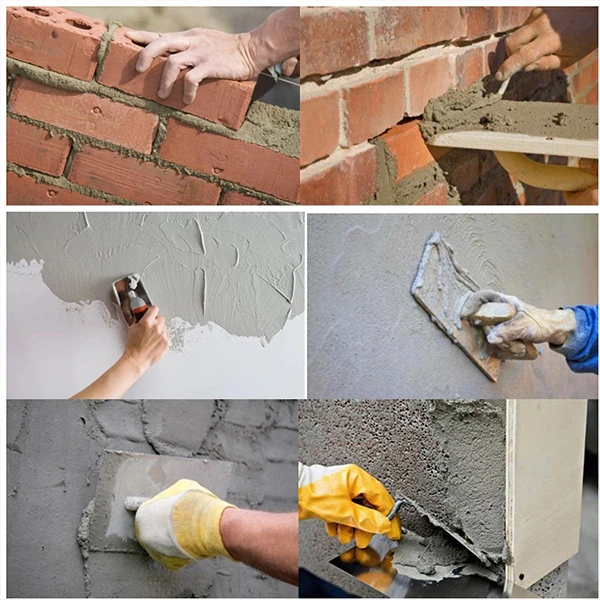Understanding Construction Grade VAE RDP Innovations in Building Materials
In the ever-evolving field of construction, materials science plays a crucial role in determining the durability, sustainability, and efficiency of building processes. One of the latest advancements in this domain is the development of construction grade VAE RDP (Vinyl Acetate Ethylene Redispersible Powder). This innovative material has been gaining traction among architects, engineers, and contractors for its versatile applications and remarkable properties.
What is VAE RDP?
VAE RDP is a powdered polymer that, when mixed with water, forms a fluid dispersion that can enhance the functionality of various construction materials. It is primarily derived from vinyl acetate and ethylene copolymers. The 'redispersible' aspect refers to its ability to dissolve in water after it has been dried, which allows it to be integrated seamlessly into numerous building products such as adhesives, mortars, and coatings.
Key Properties of Construction Grade VAE RDP
1. Improved Adhesion One of the standout features of construction grade VAE RDP is its superior adhesive properties. It significantly improves the bond strength of materials like cement, gypsum, and tiles. This ensures that structures remain firmly integrated over time, reducing the risk of cracks or detachments.
2. Flexibility and Elasticity The incorporation of VAE RDP enhances the flexibility of construction materials. This is particularly important in areas prone to thermal expansion and contraction. Buildings equipped with materials that contain VAE RDP can better withstand seismic activities and temperature fluctuations.
3. Water Resistance VAE RDP-treated materials exhibit excellent water repellency. This characteristic is vital in preventing water infiltration, which can lead to mold growth, structural damage, or reduced lifespan of building components.
4. Ease of Use The powder form of VAE RDP makes it easy to transport, store, and mix with other components. This simplifies the construction process, allowing for quicker application without sacrificing quality.
construction grade vae rdp

5. Sustainability With the growing emphasis on green building practices, VAE RDP stands out as an environmentally friendly option. Many VAE formulations are produced with lower VOC (Volatile Organic Compounds), contributing to improved indoor air quality and reduced environmental impact.
Applications in Construction
Construction grade VAE RDP can be utilized across a variety of applications, making it a highly versatile material. Here are some key uses
- Tile Adhesives VAE RDP is frequently used in tile adhesives to enhance bonding strength and flexibility, particularly in wet areas like bathrooms and kitchens. - Exterior Insulation and Finish Systems (EIFS) In EIFS applications, VAE RDP improves adhesion and flexibility, ensuring that insulation materials remain effective under varying environmental conditions.
- Cementitious Products Whether in self-leveling compounds or repair mortars, VAE RDP helps achieve better workability and adhesion, leading to durable surfaces.
- Plasters and Coatings For both interior and exterior applications, VAE RDP contributes to the performance of finishes, ensuring they adhere well and resist cracking.
Conclusion
The advent of construction grade VAE RDP has undoubtedly transformed the landscape of building materials. Its unique combination of adhesive strength, flexibility, water resistance, and sustainability makes it an invaluable asset for modern construction. As the industry continues to prioritize performance and environmental responsibility, materials like VAE RDP will play a critical role in shaping the future of construction practices.
The integration of such advanced materials enables builders to not just meet but exceed the expectations of durability and efficiency in contemporary construction, paving the way for resilient structures that stand the test of time. As adoption continues to rise, the advantages of VAE RDP will likely influence the development of new formulations and applications, fostering innovation in the construction sector for years to come.
-
A Comprehensive Guide to Methyl Ethyl Hydroxyethyl Cellulose: Applications and Industry InsightsNewsNov.24,2025
-
Understanding Methyl 2 Hydroxyethyl Cellulose: Uses, Benefits & Industry InsightsNewsNov.24,2025
-
Hydroxyethyl Methyl Cellulose HEMC: Industrial Uses, Benefits & Future TrendsNewsNov.23,2025
-
HEMC Cellulose: Versatile & Sustainable Industrial Polymer | YoungcelNewsNov.23,2025
-
Methyl Hydroxyethyl Cellulose: Versatile Building Block for Industry & SustainabilityNewsNov.23,2025
-
CAS 9032 42 2: Understanding Polyvinyl Alcohol's Impact on Industry & SustainabilityNewsNov.22,2025




